Bezoek Strasbourg in 2 dags
20 must-see POIs, geoptimaliseerde routes en anekdotes.
Kaart laden...
Je gaat de mooiste bezienswaardigheden van Strasbourg bezoeken
















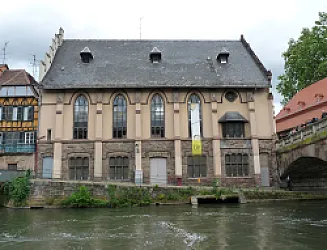
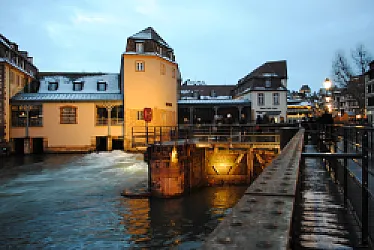
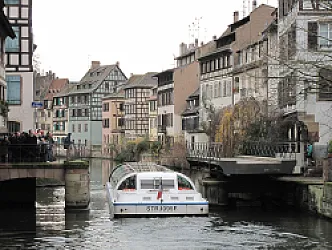

2 Days in Strasbourg — A Love Letter to the Island City
Strasbourg stole my heart the moment I stepped onto its cobbled streets. The city feels like a storybook and a living, breathing capital at once. Locals call it the "Capital of Europe" and the "Capital of Christmas," and yes, the charm is real. Some say it's overrated, but I disagree — its light, history, and warmth are unmistakable. I visited in spring and still dream about the bell chimes and river reflections.
Why visit Strasbourg beyond the famous sights? The city combines grand Gothic spires with cozy timbered alleys. You smell fresh pastries, hear church bells and chatter, and taste tarte flambée in tiny bistros. Iconic places like the Cathedral of Our Lady, the Statue of Gutenberg and Place Saint-Étienne are only the beginning. Walking here feels cinematic: sunlight on canals, ornate facades, and unexpected courtyards. You leave feeling both wonder and a soft, domestic comfort that makes you want to linger.
Planning a trip can feel overwhelming. There is so much to see in Strasbourg that you could stay for weeks. If this is your first visit, you might worry about fitting everything in. That’s exactly why I created this compact and joyful Strasbourg itinerary. Below, I’ll show you how to spend two full days and still breathe. Expect 16 highlights across religion, historic architecture, sculptures, manor houses, and urban charm — including the Seminary of St. Mary Major and Rue de la Division Leclerc.
Key tip: Go early and walk slowly. The Cathedral of Our Lady is best at dawn for light and quiet. Early starts mean fewer crowds and better photos. Walking unlocks hidden alleys and cozy cafés you’ll miss from buses. Wear comfortable shoes and pause for a pastry or coffee in Place Saint-Étienne. This makes your two days feel unhurried and full.
Now let’s dive into the itinerary and discover exactly what to see in Strasbourg, how to savor it, and how to fall in love with the city on your first time in Strasbourg.

Quick Mini Guide to Strasbourg
Where to stay:
- Centre-ville / Grande Île — walkable to Cathedral, Gutenberg statue and Rue de la Division Leclerc; ideal for evening photos of the illuminated façade.
- La Petite France — picturesque timbered houses and canals; quieter for early morning walks.
- Near Place Saint-Étienne — good for cafés, student vibe and quick access to the Seminary of St. Mary Major.
When to visit:
- Spring and early autumn — mild weather, fewer coach-tour crowds at the Cathedral of Our Lady.
- Weekdays morning — climb the cathedral platform before guided tours fill the site.
Things to do:
- Cathedral of Our Lady — buy a slot to climb the tower for panoramic views; don’t miss the Astronomical Clock inside.
- Statue of Gutenberg — quick photo stop and short walk to Rue de la Division Leclerc for local shopping and views toward the cathedral.
- Seminary of St. Mary Major & Place Saint-Étienne — enjoy café culture and occasional concerts; use this area as a slower cultural detour.
- Book an interactive tour: "Secrets of Strasbourg" for hidden history or "The Alchemist STRASBOURG" for an immersive puzzle walk.
Don't forget:
- Validate tram tickets (or use contactless) — trams are fastest between sites.
- Try tarte flambée and local Riesling; small winstubs fill up, reserve for dinner.
- Wear comfortable shoes — cobbles and canal paths reward walking between landmarks.
Dag 1 - Strasbourg
10 POIs te ontdekkenDag 1 - Ochtend à Strasbourg
5 Bezienswaardigheden - Duur : 3h15 - Afstand : 1.2 km - Wandelen : 0h16
Place de l'Homme de Fer
- Place de l'Homme-de-Fer ontleent zijn naam aan een standbeeld van een soldaat in harnas dat in de 18e eeuw werd bevestigd aan een herenhuis, nu nr. 2 op het plein.
- Tijdens de Tweede Wereldoorlog werd een eiland van gebouwen verwoest om het huidige plein te creëren.

Generaal Kléber Monument
- Het monument van generaal Kléber is gewijd aan de held van de Revolutionaire Oorlogen, die in 1800 in Caïro werd vermoord.
- Zijn stoffelijke resten werden gebalsemd en vervoerd naar verschillende locaties, waaronder Marseille en Straatsburg.
- In 1838 werd zijn as overgebracht naar een grafkelder op de Place Kléber in Straatsburg, met een bronzen standbeeld dat hem voorstelt.
- Bovenop zijn grafkelder staat het bronzen standbeeld van generaal Kléber met de brief van de Britse admiraal waarin hij werd verzocht Egypte te verlaten, en aan zijn voeten een sfinx die Egypte voorstelt.

Aubette
- Gebouwd tussen 1765 en 1778, oorspronkelijk bedoeld voor militaire doeleinden, werd het gebouw gebruikt voor huisvesting en een wachthuis.
- In 1928 werd het gebouw omgebouwd tot een vrijetijdscomplex met zalen als een cine-dancing en een foyer-bar.
- Het vrijetijdscomplex had verschillende zalen met geometrische decoraties en biomorfe vormen, die de artistieke avant-garde van die tijd weerspiegelden.

Palais Rohan
- Het paleis werd in 1732-1742 gebouwd voor prins-bisschop Armand-Gaston-Maximilien de Rohan, ter vervanging van het vorige bisschoppelijke paleis.
- Het paleis ontleent dus zijn naam aan de familie de Rohan, aangezien vier prins-bisschoppen met deze naam het bisdom Straatsburg in de 18e eeuw hebben bezet.
- Tijdens de Franse Revolutie werd het gebouw gebruikt als gevangenis en na de Duitse annexatie van Straatsburg werden er klassen in ondergebracht voor de Kaiser-Wilhelms-Universität.
- Tegenwoordig zijn er drie musea in het paleis gevestigd: het Museum voor Decoratieve Kunsten, het Museum voor Schone Kunsten en het Archeologisch Museum.
- Het interieur van het paleis bestaat uit grote appartementen, zoals de synodezaal, de bisschoppensalon, de koningskamer en de assemblagesalon, en kleinere appartementen van de prins-bisschop, zoals de voorkamer en slaapkamer van Napoleon I.

Place Kléber
- Het plein eert Jean-Baptiste Kléber, een Franse generaal die beroemd is vanwege zijn deelname aan de revolutieoorlogen en de Egyptische campagne.
- Het plein wordt begrensd door de Aubette, een neoklassiek gebouw uit de 18e eeuw.
- In het midden van het plein staat een standbeeld van Kléber, waarop de generaal in zijn voeten staat terwijl hij de brief van admiraal Keith vasthoudt.
Dag 1 - Middag à Strasbourg
5 Bezienswaardigheden - Duur : 3h45 - Afstand : 1 km - Wandelen : 0h13
Hôtel Cour du Corbeau
- Het werd gebouwd in de 15e eeuw en bood onderdak aan een herberg die werd bezocht door grootheden als de hertog van Beieren en de keizer van Oostenrijk.
- In 1668 werd het hotel getroffen door een brand, maar het overleefde en functioneerde als herberg tot 1854.
- De Cour du Corbeau, bestaande uit heterogene gebouwen, werd in de 20e eeuw gerestaureerd met behoud van het historische karakter.
- In 1999 brachten archeologische onderzoeken overblijfselen uit de 15e en 16e eeuw aan het licht.
- De Cour du Corbeau, met zijn gevels en daken, staat sinds 1930 op de monumentenlijst.
- De waterput op de binnenplaats staat ook op de monumentenlijst sinds 1933.

Place du Château
- Dit plein heeft in de loop der tijd verschillende namen gehad: Cour de l'évêque, place de l'Evêché, place de la Responsabilité, place du Château du Palais, place du Château Royal, place du Château, Schlossplatz, en opnieuw place du Château.
- Het heeft ook naamsveranderingen ondergaan die verband houden met de geschiedenis van de regio: Het werd in 1215 gebouwd en heeft sinds het einde van de Tweede Wereldoorlog zijn huidige naam behouden.

Place du Marché Gayot
- Place du Marché Gayot werd in 1769 aangelegd op de plaats van het Hôtel Canonial de Brunswick en was oorspronkelijk bedoeld als kruiden- en pluimveemarkt.
- Er werden al snel huizen gebouwd rond het plein, waaronder een zoutziederij en een herberg, evenals vakwerkhuizen waarvan sommige lage deuren hadden om werknemers van het bisschoppelijk hof te huisvesten.
- Het plein werd gebruikt als vleesmarkt voor slagers en herbergde een overdekte markt voordat het een parkeerplaats werd, die vervolgens werd gerestaureerd om plaats te bieden aan caféterrassen, restaurants en voetgangers.
- Sinds 2003 wordt het plein gesierd door de gietijzeren sculptuur "Pierre trouée" van Daniel Pontoreau, die lijkt op een raadselachtige meteoriet die uit de lucht is gevallen.

Neue Bau
- De Neue Bau is een 16e-eeuws historisch monument, oorspronkelijk een uitbreiding van het Hôtel de Ville van Straatsburg.
- Het is nu het hoofdkantoor van de Kamer van Koophandel en Industrie van Straatsburg en de Elzas.
- Na de verwoesting van de Pfalz in 1781 werd de Neue Bau het nieuwe Hôtel de Ville.

Kammerzell House
- Het Maison Kammerzell, gebouwd in 1427, heeft rijk versierd vakwerk en staat tegenover de Notre-Dame kathedraal.
- In 1571 gekocht door koopman Martin Braun, werden er in 1589 gebeeldhouwde houten verdiepingen aan toegevoegd in een unieke renaissancestijl.
- De gebeeldhouwde houten versieringen op de gevel beelden heilige taferelen, middeleeuwse legenden, de vijf zintuigen, de vier tijdperken van het leven en andere symbolen uit.
- Het interieur herbergt een restaurant en een schilderij uit 1910 van Léo Schnugg dat een culinaire anekdote uit Straatsburg illustreert.
Dag 2 - Strasbourg
10 POIs te ontdekkenDag 2 - Ochtend à Strasbourg
5 Bezienswaardigheden - Duur : 3h45 - Afstand : 1.2 km - Wandelen : 0h15
Pont de la Poste
- Pont de La Poste is een segmentale (segmentale) boogbrug en verkeersbrug waarvan de bouw begon in 1904.

Passerelle des Juifs
- De Joodse voetgangersbrug van Straatsburg overspant de rivier de Ill van de Lezay-Marnésia kade naar het Plein van de Republiek.
- In de middeleeuwen was dit de locatie van de Joodse Poort in de oude vestingwerken van de stad, die naar de Joodse begraafplaats leidde.
- Tragisch genoeg werden Joden tijdens de uitbraak van de Zwarte Pest op Valentijnsdag in 1349 op deze plek verbrand.

Gerechtsgebouw
- Het gerechtsgebouw, gebouwd in de jaren 1890, heeft een gevel in Griekse stijl, versierd met Ionische zuilen, allegorische beelden en sfinxen.
- Allegorische decoratieve elementen en sfinxen zijn ook binnen in het gebouw te vinden, met name bij de trappen die naar de rechtszalen leiden.

Paleis aan de Rijn
- Het Rhinapaleis, ook bekend als het Kaiserpalast, werd in 1883-1888 gebouwd in een Germaanse neorenaissancestijl.
- Het gebouw was oorspronkelijk een keizerlijk paleis, maar wordt nu gebruikt als officieel gebouw.
- De paleistuin herbergt een archeologische collectie en beeldhouwwerken.
- Het gebouw zelf heeft in de loop der jaren transformaties ondergaan, waaronder het gebruik als militair hospitaal tijdens de Eerste Wereldoorlog.

Opéra national du Rhin
- De Nationale Opera van de Rijn wordt beheerd door de steden Straatsburg, Mulhouse en Colmar, met elk hun eigen creatieve activiteit: opera in Straatsburg, Ballet de l'Opéra national du Rhin in Mulhouse en Opéra Studio in Colmar.
- De instelling bestaat al meer dan 50 jaar en werkt voor muzikale en choreografische producties samen met het Orchestre philharmonique de Strasbourg en het Orchestre symphonique de Mulhouse.
Dag 2 - Middag à Strasbourg
5 Bezienswaardigheden - Duur : 3h30 - Afstand : 0.6 km - Wandelen : 0h07
Petite France
- La Petite France, een schilderachtige wijk die sinds 1988 op de Werelderfgoedlijst van UNESCO staat. De wijk wordt begrensd door verschillende waterwegen: Ill, canal de navigation, Spitz molenkanalen, Düntz en Zorn.
- De wijk wordt begrensd door kades en straten, zoals Quai de la Bruche, Rue du Bain-aux-Plantes, Place Benjamin-Zix, enz.
- Petite France bestond historisch gezien uit verschillende afzonderlijke entiteiten: de Ponts couverts, de wijk Moulins, het gebied rond de rue du Bain-aux-Plantes.
- In 1687 werd een instelling voor syfilispatiënten overgebracht naar Petite France, waaraan de wijk zijn naam ontleende.
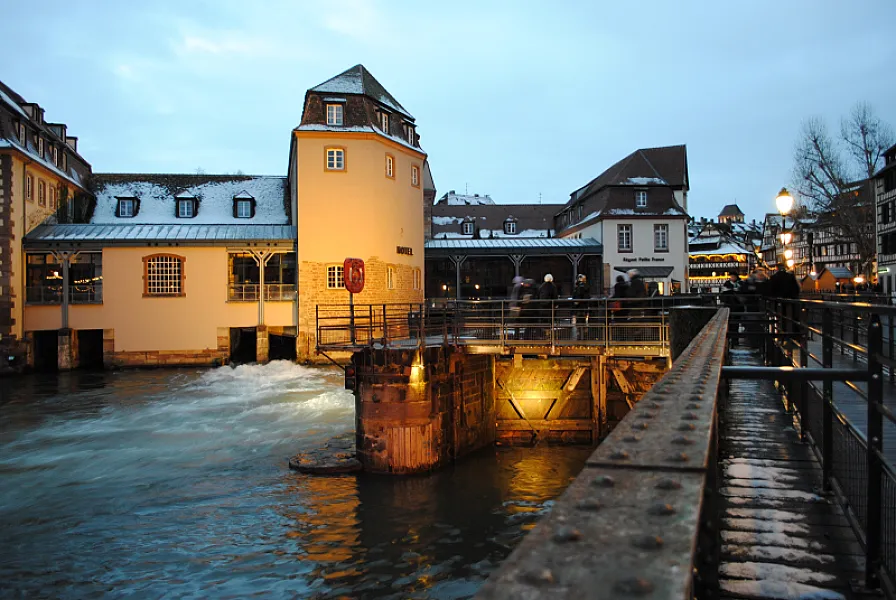
Oude Koelers
- De voormalige gletsjers van Straatsburg waren ooit een kunstmatige koudefabriek met machines van het bedrijf Quiri, van 1897 tot 1990.
- De gebouwen zijn omgetoverd tot een vijfsterrenhotel met de naam Le Régent Petite France.
- De fabriek gebruikte verdamping van vloeibaar gas om koude te produceren, vergelijkbaar met de manier waarop huishoudelijke koelkasten werken.
- De fabriek stopte met de productie op 31 mei 1990.
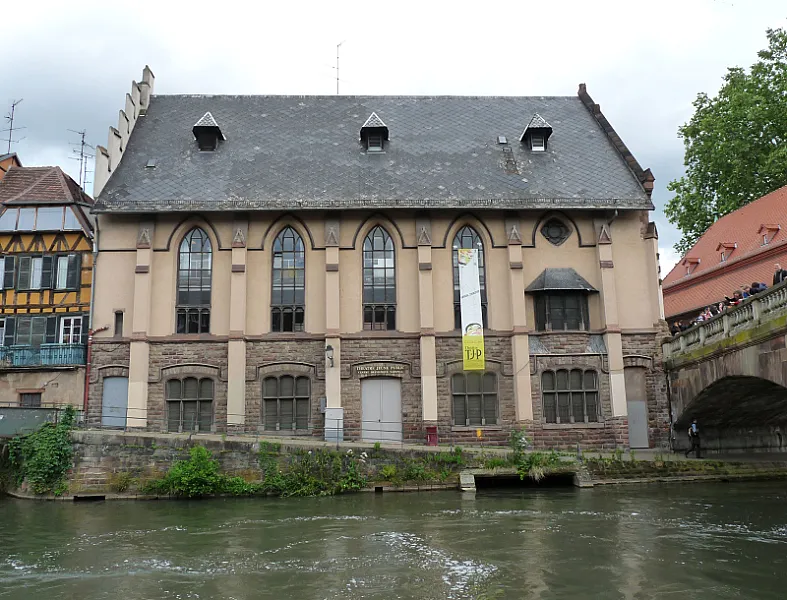
Sint-Martinuskerk
- De Saint-Martin kerk in Straatsburg werd in 1905 gebouwd in neogotische stijl.
- De kerk mag niet verward worden met de Église Saint-Martin de Strasbourg uit de 12e eeuw.
- De gemeenschap die in deze kerk samenkwam, verhuisde in 1969 naar de wijk Meinau na de bouw van een nieuwe baptistenkerk.
- De kerk wordt niet meer voor de eredienst gebruikt.
- Sinds 1974 herbergt het gebouw het Théâtre Jeune Public (Jong Openbaar Theater).
- Deze informatie maakt deel uit van een ontwerpartikel over een kerk of kathedraal.
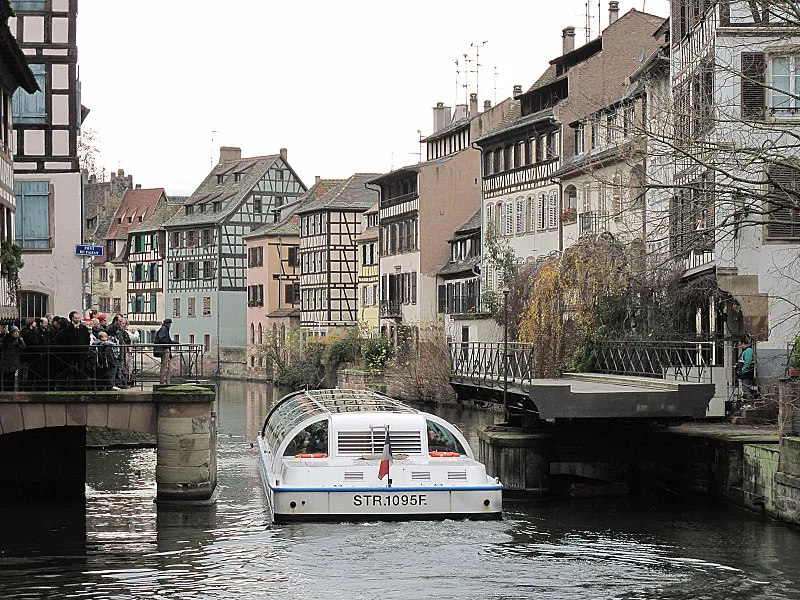
Fazantenbrug
- De Faisanbrug, ook wel Draaibrug genoemd, is een 19e-eeuwse hydraulische draaibrug.⌛ Een oorspronkelijke houten brug uit de 14e eeuw werd in 1854 vervangen door deze beweegbare brug om zowel voetgangers als vrachtschepen te laten passeren.
- De brug werd in 1869 omgebouwd tot een ophaalbrug en vervolgens in 1888 vervangen door het huidige model van staal en hout.
- In 1999 werd de brug gerenoveerd en verbeterd met een hydraulisch bedieningssysteem.
- Vandaag de dag is deze pittoreske brug een van de toeristische attracties van de bewaard gebleven historische Elzasser wijk uit de 16e eeuw.
- De brug is gebouwd naast het huis in 40 rue du Bain-aux-Plantes en ligt in de buurt van talrijke bezienswaardigheden, waaronder het beroemde Leerlooiershuis van Straatsburg.

Kerk Saint-Pierre-le-Vieux
- De kerk van Oude Sint-Pieters werd voor het eerst vermeld in 1130 en was een katholieke en lutherse simaneumkerk.
- In de middeleeuwen was het een van de negen parochiekerken van het bisdom Straatsburg.
- De kerk werd in 1398 het nieuwe onderkomen van het kapittel van de abdij van Honau, vanwege overstromingen op hun oorspronkelijke locatie in Rhinau.
- In 1535 werd in de kerk een Latijnse 'middelbare school' geopend.
- In 1683 beval Lodewijk XIV dat een deel van de kerk aan de katholieken moest worden teruggegeven en dat er een scheidingsmuur moest worden geplaatst.
- In de kerk bevinden zich verschillende opmerkelijke kunstwerken, waaronder gotische schilderijen en houten reliëfs uit de Renaissance, waarvan sommige zijn geclassificeerd als historische monumenten.
Where to Stay in Strasbourg
Choosing the right base in Strasbourg matters because the city rewards walking and short tram hops: your neighbourhood will shape how much of the city you can soak in without wasting time. If you want to wake up and be moments from the Cathedral of Our Lady and the Statue of Gutenberg, staying on the island heart of the city makes it easy to slide into the UNESCO-listed atmosphere and to make the most of a two-day stay.
Strasbourg is compact and layered, with the medieval Grande Île at its core, lively student quarters to the north and east, and the gridded Neustadt and quieter residential streets beyond. The Seminary of St. Mary Major and Place Saint-Étienne sit close enough to each other and to the cathedral that a central location keeps your walking straightforward: mornings in the cathedral precinct, afternoons exploring nearby lanes and the riverside, evenings at a café without a long commute back to your room.
For practical neighbourhood choices, consider staying on the Grande Île if you want to be in the thick of things — the Cathedral and the Statue of Gutenberg will be part of your daily stroll. If you prefer a slightly calmer, local feel but still within easy reach of the Seminary of St. Mary Major and Place Saint-Étienne, the Krutenau area offers narrow streets, student energy and good dining options. Those who value tidy boulevards and a sense of 19th‑century architecture will find the Neustadt direction useful, especially if you want straightforward access to Rue de la Division Leclerc and tram links.
Getting around is simple: Strasbourg’s efficient tram network and compact centre mean most sights are 10–20 minutes apart. Pick accommodation with a nearby tram stop or within easy walking distance of the cathedral; arriving at Gare Centrale usually puts you a short tram ride from the heart. For an efficient two-day itinerary, base yourself where mornings can be spent at the cathedral and Seminary, afternoons around Place Saint-Étienne, and pockets of time left to wander by the Gutenberg statue and along the river.
Finally, don’t overthink it: whether you choose a central room on the Grande Île, a cosy flat in Krutenau, or a quiet street in Neustadt, prioritise proximity to transit and the cathedral area for peace of mind. With a good location you’ll waste less time in transit and more time enjoying Strasbourg’s layered streets, architecture and riverside charm. Safe travels — your short stay will feel perfectly manageable from the right base.
Getting Around Strasbourg
Strasbourg is delightfully easy to explore by public transport, and once you get comfortable with the rhythm of the city you’ll feel like a local in no time. The network run by CTS is centered on frequent tram lines (A–E) and a complementary bus system, so most sights are never far from a stop. Trams are punctual and the stops are well signed in both French and English, which makes hopping from the riverside to the Grande Île feel effortless 🚇. The city’s compact center also means many attractions are within a pleasant walk if you prefer to soak up the streetscape.
A practical tip about tickets: you can buy single tickets, multi-ride carnets, or a day pass depending on how much you plan to move around. Single fares are inexpensive (usually under a few euros) and a 24‑hour option often becomes the best value for a full day of sightseeing. Purchase at station machines, from kiosks, or via the official CTS app, and remember to validate your ticket on the validators when you board; inspectors do check. Most ticket machines accept cards and contactless payment, so you don’t need to carry lots of change 🎫.
Use Google Maps to plan routes in real time: it shows tram numbers, departure times, and walking segments clearly. Set your destination to the exact name (for example Cathedral of Our Lady or Place Saint-Étienne) and Google will give you door‑to‑door directions with platform info and estimated travel times. I rely on it constantly in Strasbourg because the app’s tram departure times are usually spot on, and it helps you decide whether to walk a scenic five minutes instead of waiting for the next tram.
Money-saving hints: if you love wandering, combine walking with trams—many central POIs are clustered so a mix of both saves fares. If you’re in town for a couple of days, a day pass or a small carnet of tickets often costs less per ride. Also look for reduced fares for youth and seniors on the CTS website before you travel.
From personal experience, when we wanted to go from the Seminary of St. Mary Major to the Cathedral of Our Lady we didn’t overthink it. We hopped on a tram toward the city center, got off at Homme de Fer, and walked along the lively streets to the Cathedral in under ten minutes. The tram dropped us close, we validated our tickets, and then enjoyed the short walk through historic lanes—simple, efficient, and joyful 🗺️. You’ll find Strasbourg’s transport welcoming and straightforward, perfect for first-time visitors.
What to Pack for Strasbourg
Two days in Strasbourg is mostly church spires, canals of La Petite France, and strolling between monuments — I learned that on my first trip when I ambitiously walked 15 miles over two days and still felt like I missed corners. Below are the essentials I pack every time, with short stories about why each item saved the day (or my feet).
1. Comfortable walking shoes (REQUIRED — e.g., Ecco Soft 7 or Merrell Moab): Strasbourg’s historic center is full of cobblestones and uneven pavements. The first time I wore flats I was miserable by hour three; with supportive shoes I easily did 10+ hours of wandering without foot pain. Choose shoes with good soles and ankle support so your knees don’t pay the price after climbing cathedral steps.
2. Cross-body bag with zippered compartments: Popular viewpoints and trams get crowded around cathedral hours. I had my phone jostled once on a packed bridge — a small, zippered cross-body stopped it sliding out. It keeps essentials handy (wallet, transit ticket, tiny guide) and deters opportunistic hands, especially in touristy areas like Place Gutenberg.
3. Weather-appropriate clothing (layered jacket, breathable layers): Strasbourg weather flips quickly — I’ve been out for 10+ hours where morning fog turned into a sunny afternoon. Layers let you visit riverside monuments comfortably and still look tidy for a cathedral interior or a café. In cooler months bring a warm mid-layer; in summer, a light sun/shower jacket is a lifesaver.
4. Power adapter (Type C/E for France, 230V): You’ll be taking lots of photos of sculptures, façades, and memorials. My camera and phone both ran low by late afternoon the last trip; having the proper European adapter meant I could charge at my hotel and not miss evening shots. Don’t assume your charger will fit French sockets.
5. Power bank (10,000–20,000 mAh): Between map navigation, photography, and checking opening times, your phone battery will drain fast. I relied on a 10,000 mAh power bank to push my phone back to 70% during a long day of exploring and festival lights — it kept me connected without hunting for cafés to plug in.
6. Optional — compact umbrella & lightweight scarf: Short showers are common; once I ducked under a café awning for 20 minutes during a sudden downpour. A small umbrella packs tiny but keeps you sightseeing without getting soaked. A scarf doubles as a layer for cool evenings and a respectful cover when visiting religious sites.
Enjoy Your Trip to Strasbourg!
In just two days you'll explore 16 carefully chosen spots across Strasbourg, packed with cathedral spires, quiet courtyards and lively squares. From the Seminary of St. Mary Major to Place Saint-Étienne and the Cathedral of Our Lady, this itinerary gives you everything you need to taste the history, architecture and charm of the city.
Remember, this is a guide, not a strict schedule — the best moments are flexible. Let your pace lead the way and leave room for the unexpected: wandering down a hidden lane, stumbling on a sculpture, or pausing for a spontaneous café stop by the Ill. The magic often happens in unplanned moments, so don't pressure yourself to see EVERYTHING; savor a few places deeply.
I hope you arrive curious and leave inspired — I'm excited for you! Embrace Strasbourg's light on the canals, the hum of markets, and the hush inside its churches. You're going to love every winding street and create unforgettable memories that will stay with you long after you return.
Want to explore in a playful way? Check out our Coddy tours: Secrets of Strasbourg and The Alchemist STRASBOURG — gamified city adventures that turn discovery into a game. They're perfect for families, friends, or anyone looking for a lively, interactive way to see the city.
Safe travels! Have fun exploring Strasbourg — enjoy every moment, and please share your stories or ask me any questions when you return. Enjoy!
Wil je meer avontuur?
Ontdek onze stedelijke escape games om je bezoek om te toveren tot een interactief avontuur!





















